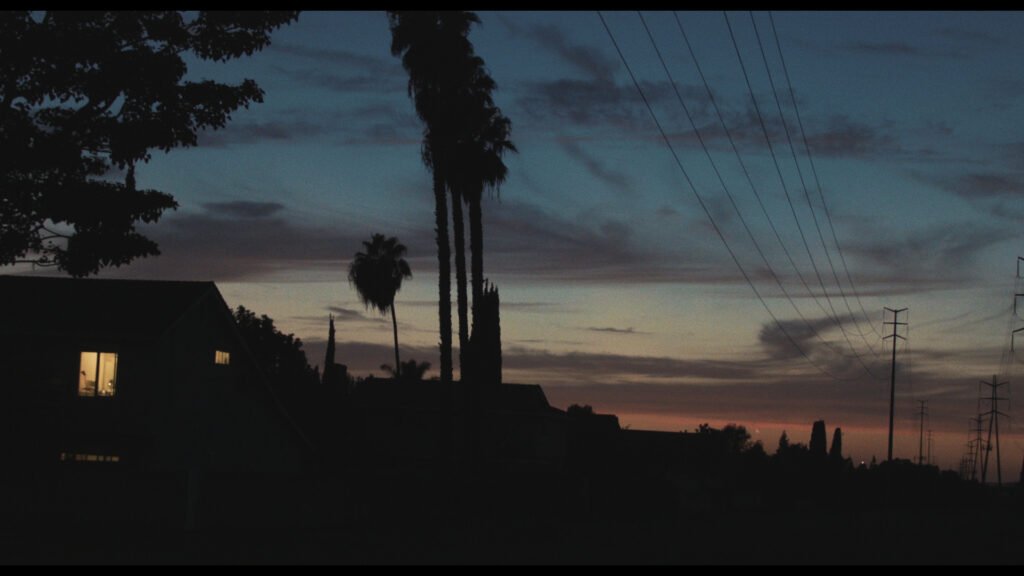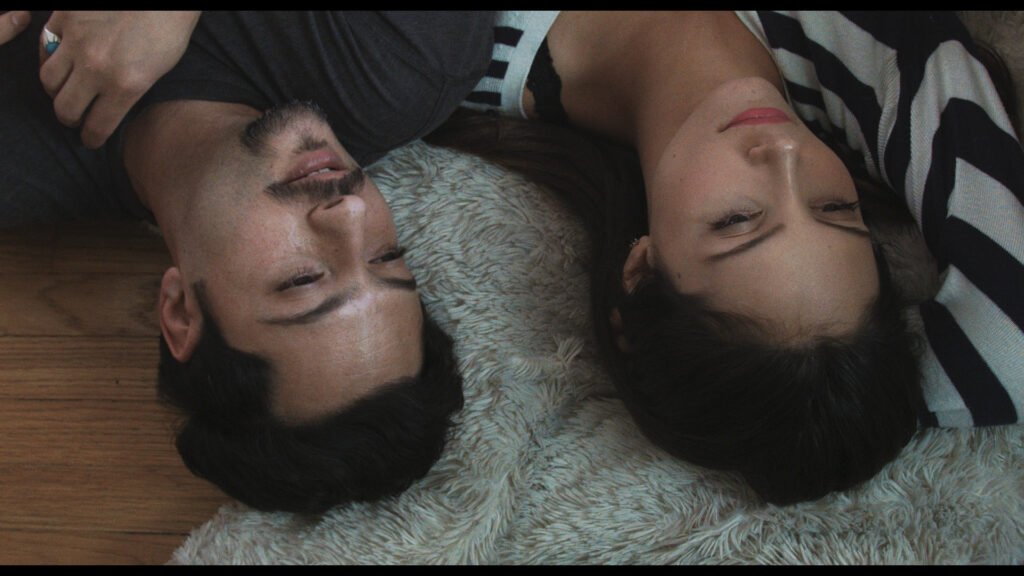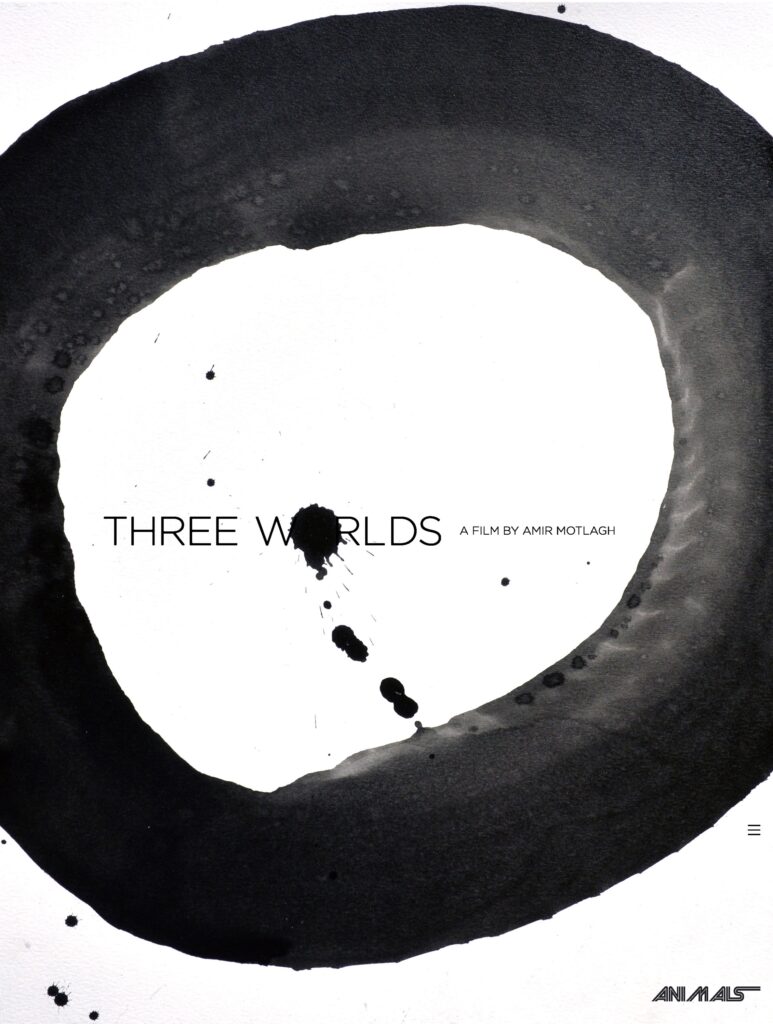Amir Motlagh has a knack for making films that leave me feeling moved and raw. They also challenge me to evaluate my connections – or lack thereof – quite keenly. When I sat down to rewatch Motlagh’s film “Three Worlds” so I could write something meaningful and cohesive about it, I had three questions written down that I wanted to write the answers to:
What is Three Worlds about?
What’s a memory worth?
What can science fiction be?
Let’s explore what some of my thoughts were when I tried to answer these questions.

What is Three Worlds About?
Three Worlds is, on the surface, about a man who gets a procedure that changes his perception of everything.
But really, Three Worlds is a three-part melody about memory: a tone poem in film form.
How’s that?
I’m not going to engage in a plot synopsis. This isn’t that kind of film.
The clues are there, and much like I believe I know what happened in the film Eraserhead, I believe I know what happened in Three Worlds.
From the opening, with its intimate framing of a memory recounted, Three Worlds is enveloping in its concept. The opening scenes involve questioning the senses and perceptions of self. To reduce the film to a ‘plot’ is to miss the entire point of its experience.
Instead of getting caught in the layers of story, I’ll focus on what Three Worlds makes me think about.
There’s a theoretical framework in psychology that describes the levels of experience an individual has in their life. The three worlds are the internal world, the interpersonal world, and the external world.

The internal world refers to an individual’s subjective experiences, thoughts, emotions, and beliefs. It includes the conscious and unconscious mind, as well perceptions of self and the world . The internal world is influenced by past experiences and relationships. It shapes someone’s perceptions of the present.
The interpersonal world refers to an individual’s relationships with others, including family members, friends, colleagues, and romantic partners. It includes the emotional bonds, communication patterns, and power dynamics that exist within these relationships. The interpersonal world can influence an individual’s sense of self and their internal world.
The external world refers to the objective, tangible aspects of an individual’s environment, such as their physical surroundings, cultural norms, and societal expectations. This includes the ways in which an individual interacts with and is impacted by the larger world around them.
According to this theoretical framework, an individual’s experience is shaped by the complex interplay between these three worlds, and problems can arise when there are conflicts or inconsistencies between them.
So, let’s say someone has a problem with a relationship – and they seek to reconfigure that. How could they do that? How could that happen? Are events separate? Are emotions? Where do our feelings, desires, thoughts, and impulses originate? How does a single memory impact a person? What about more? How much do moments, people, feelings — reach through time?
Does connection transcend memory? Can memory transcend connection?

What’s a memory worth?
Three Worlds directly asks many questions of its characters and viewers.
I’m a sucker for any piece of work that asks “Who Are You,” pulling the viewer immediately into the work. Three Worlds takes that line of inquiry farther, asking more. And it asks ever more – not only about what the fundamental meaning of being is, but also how memory plays into it, and how our role in the world colors it.
As scenes of intimacy, loss, and memory play before us, Three Worlds gives pieces of the worlds, fragments of experience. It expresses the dissatisfaction, the profundity, and the absurdity of any given moment. it demands attention.
Three Worlds shares much with the meta observations in ‘If On A Winter’s Night a Traveler’. One quote in particular springs to mind, “This is what I mean when I say I would like to swim against the stream of time: I would like to erase the consequences of certain events and restore an initial condition. But every moment of my life brings with it an accumulation of new facts, and each of these new facts bring with it consequences; so the more I seek to return to the zero moment from which I set out, the further I move away from it.”
I’m also reminded of Calvino in the moments of Saam’s eyes, “Don’t be amazed if you see my eyes always wandering. In fact, this is my way of reading, and it is only in this way that reading proves fruitful to me. If a book truly interests me, I cannot follow it for more than a few lines before my mind, having seized on a thought that the text suggests to it, or a feeling, or a question, or an image, goes off on a tangent and springs from thought to thought, from image to image, in an itinerary of reasonings and fantasies that I feel the need to pursue to the end, moving away from the book until I have lost sight of it.”
What can science fiction be?
Science fiction isn’t all spaceships and laser battles. Speculative and introspective science fiction like Three Worlds is both refreshing and exciting. It also gives independent filmmakers a great way into the genre. Three Worlds manages to fuses its ‘meta’ world with the urgency of feeling expressed through its compelling score (I’d hardly call the use of good music cinematic manipulation as posited by one of the characters, though), textured cinematography, and grounded performances.
Science fiction doesn’t need to be a ship – it can be a syringe, and the world as we know it is the world as we feel it. Motlagh manages to explore these worlds for not only Saam, the main character in the film, but for us, the viewer. While the beautiful Los Angeles sky can pull us into the rich visuals of the film, the challenging emotions remind us that we are a part of its world and this experience.
Feelings from a Harmless Room
What I’ve always found amazing about Amir Motlagh’s films is how he deals with connection in a disconnected world. In Three Worlds, it’s an exploration of the connectedness of the self to it all that is on display. As Saam navigates his life and relationships, we as viewers are challenged to consider what is art, what is artifice, and what we think our world really is.
In the ‘Harmless Room’ segments, Motlagh sits in a darkened yet oscillating space between the narrative worlds. This space with Saam isolated, alone. Projections punctuate the frame.
Questions.
Dog God
There are so many layers, and so much to digest. What does the date 2/15/18 have to do with it? What is the value of a memory? What frantic wisdom could be found in a large chicken’s egg?
What is the nature of time in a memory?
The beautiful trick of the raw, emotional work of Three Worlds is that it got me to forget all of the crazy questions I had about the sci-fi part of the movie. The more I saw Saam interact, and heard the family talk, the less I worried about how and the more I wanted to know why. For a work that seems so puzzling on its surface, the undercurrent of relationships and how they color and impact the experience of life remains.
Three Worlds asks a lot of its viewers – but it delivers far more than it asks. The cinematic experience of LA rooftops and its beautiful skies interspersed with carefully framed conversations and the Harmless Room are evocative and inspiring. This isn’t the sort of film for people who are looking for comfortable answers. It displays its raw and sometimes dark emotions in a way that is easy to connect to and challenging to contemplate. Three Worlds asks us what of our lives, our selves – our worlds. What are we? How do our relationships impact our world?
What is a memory worth?
Three Worlds will be screened as part of the Indie Discovery LA Series.

Cast / Crew
Written & Directed by Amir Motlagh
Produced by ANIMALS, Amir Motlagh, Charles Borg
Director of Photography: Amir Motlagh
Cast:
Amir Motlagh Saam Heidari
Samantha Robinson Ashley Evans
Rey Deegan Charles Adler
Keaton Shyler Danica Mihajlović
Gregory Linington Thomas Blaumberg
Editing: Bryan Tuck, Amir Motlagh
Original Score by: Julian DW Brink
Sound Designer & Re-Recording Mixer: Stephen Holliger
Leave a Reply